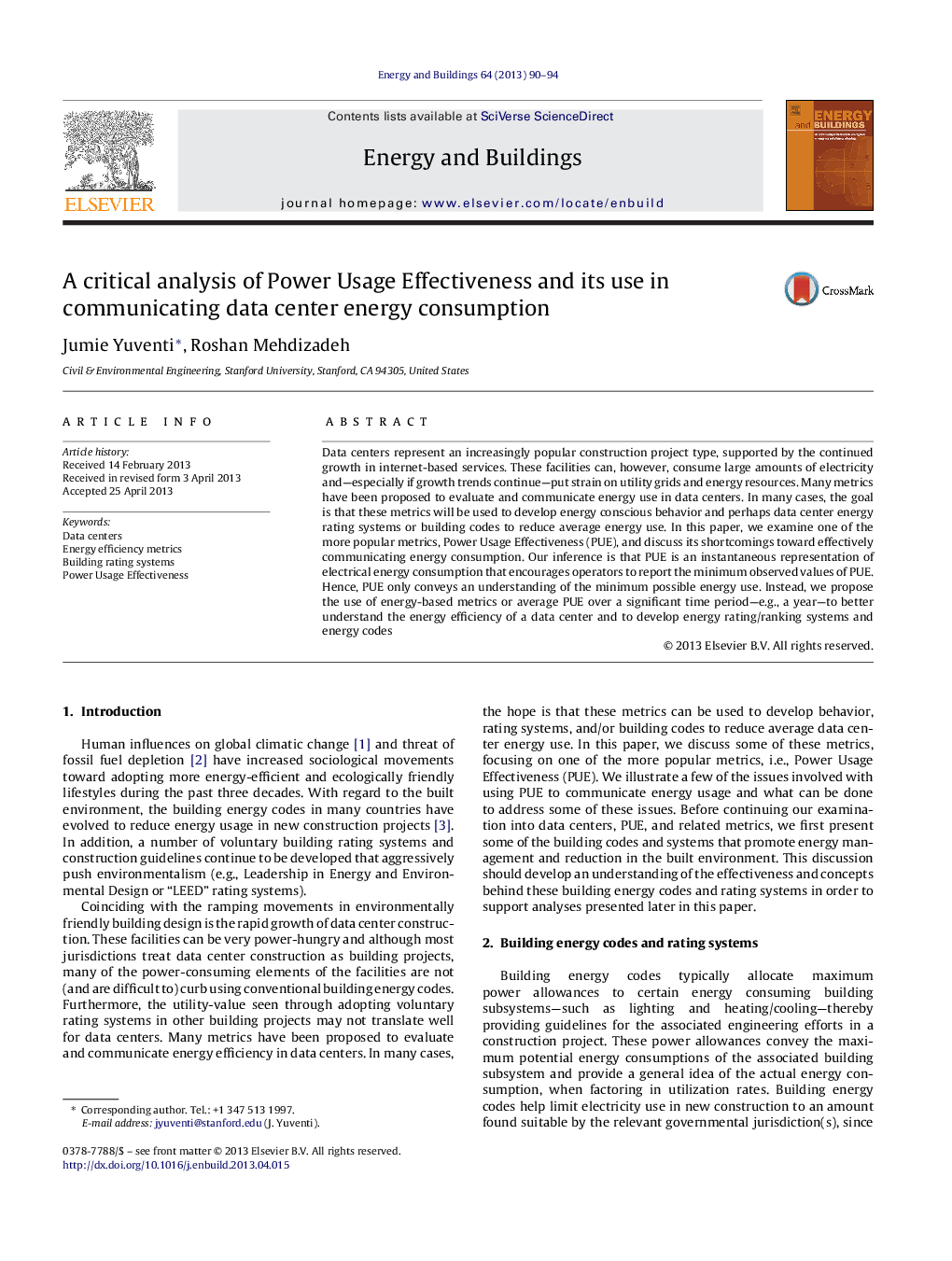| Article ID | Journal | Published Year | Pages | File Type |
|---|---|---|---|---|
| 263384 | Energy and Buildings | 2013 | 5 Pages |
•Many industrialists and researchers are pushing for a metric-based system to increase energy efficiencies in data centers.•Power Usage Effectiveness (PUE) is one of the more popular metrics used to communicate/rank data center energy efficiency.•PUE has many issues and fundamentally does not communicate “energy” use or efficiency.•We propose that time-averaged PUE or energy-based variants of PUE be used instead to develop sustainability frameworks.
Data centers represent an increasingly popular construction project type, supported by the continued growth in internet-based services. These facilities can, however, consume large amounts of electricity and—especially if growth trends continue—put strain on utility grids and energy resources. Many metrics have been proposed to evaluate and communicate energy use in data centers. In many cases, the goal is that these metrics will be used to develop energy conscious behavior and perhaps data center energy rating systems or building codes to reduce average energy use. In this paper, we examine one of the more popular metrics, Power Usage Effectiveness (PUE), and discuss its shortcomings toward effectively communicating energy consumption. Our inference is that PUE is an instantaneous representation of electrical energy consumption that encourages operators to report the minimum observed values of PUE. Hence, PUE only conveys an understanding of the minimum possible energy use. Instead, we propose the use of energy-based metrics or average PUE over a significant time period—e.g., a year—to better understand the energy efficiency of a data center and to develop energy rating/ranking systems and energy codes
Graphical abstractFigure optionsDownload full-size imageDownload as PowerPoint slide
